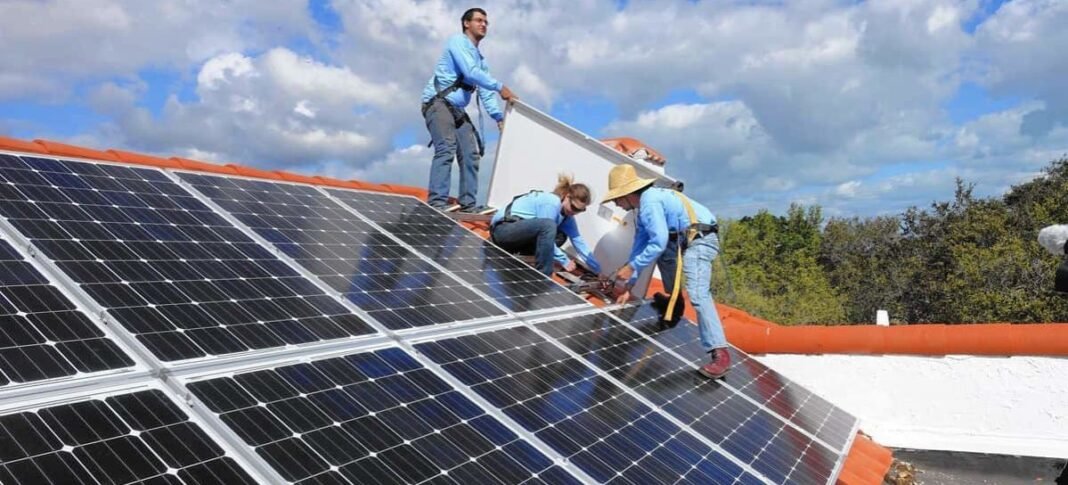Switching to solar energy is a significant step towards sustainability and reducing energy costs. However, before you can start reaping the benefits of solar panels, it’s essential to consider your roof’s suitability for the installation. The materials, age, and structural integrity of your roof are crucial factors that can impact the efficiency and longevity of your solar energy system. This article will delve into these aspects, providing you with the necessary insights to make informed decisions about installing solar panels on your roof.
Understanding Roof Materials
The type of material your roof is made of can significantly affect the installation process and the efficiency of your solar panels.
- Asphalt Shingles: The most common roofing material in the United States, asphalt shingles, are generally compatible with solar panel installations. They are easy to work with and provide a good base for mounting systems.
- Metal Roofs: Metal roofs are highly durable and can support solar panels well. The standing seams of metal roofs make it easier to attach the mounting brackets without drilling holes, preserving the roof’s integrity.
- Tile Roofs: While tile roofs, such as those made of clay or slate, are more challenging to work with, solar panels can still be installed effectively. Special mounting hardware is often required to avoid damaging the tiles.
- Flat Roofs: Flat roofs offer versatility in panel placement, allowing for optimal angles to capture sunlight. However, additional mounting systems may be necessary to tilt the panels correctly.
Assessing Roof Age
The age of your roof plays a critical role in determining whether it is suitable for solar panel installation.
- New Roofs: If your roof is relatively new, it is an excellent candidate for solar panel installation. New roofs are structurally sound and unlikely to need major repairs or replacement soon.
- Old Roofs: Installing solar panels on an old or damaged roof can be risky. If your roof is nearing the end of its lifespan, it’s wise to replace it before installing solar panels. This can prevent the need to remove and reinstall the panels when the roof eventually needs replacing, saving time and money in the long run.
- Roof Inspection: Regardless of age, a professional roof inspection is recommended before proceeding with a solar installation. An inspection can identify any underlying issues that need addressing, ensuring your roof can support the additional weight and structure of the solar panels.
Evaluating Structural Integrity
The structural integrity of your roof is paramount to the safety and effectiveness of your solar panel system.
- Weight Support: Solar panels add extra weight to your roof, so it’s crucial to ensure that your roof can support this added load. Most residential roofs can handle the weight of solar panels, but older or weakened structures may require reinforcement.
- Roof Condition: Check for any signs of damage, such as leaks, sagging, or broken tiles. Addressing these issues before installation is essential to prevent further damage and ensure the longevity of both your roof and solar panels.
- Professional Assessment: Hiring a structural engineer or a professional roofer to evaluate your roof’s condition can provide peace of mind. They can recommend necessary repairs or reinforcements to make your roof suitable for solar panel installation.
Personal Experience: A Case Study
When we decided to install solar panels on our home, our roof was about 15 years old and made of asphalt shingles. Although the roof appeared to be in decent shape, we opted for a professional inspection to be sure. The roofer identified a few minor issues, like some loose shingles and potential weak spots.
We decided to address these issues first, ensuring the roof was in optimal condition for the solar panel installation. This proactive approach not only safeguarded our investment but also gave us confidence in the longevity of our solar energy system. Now, with the panels installed, we’re enjoying significant savings on our energy bills and contributing to a greener planet.
Forward-Looking Considerations
As solar technology continues to advance, the integration of solar panels with roofing materials is becoming more seamless.
- Building-Integrated Photovoltaics (BIPV): BIPV systems combine solar cells with traditional roofing materials, allowing for a more aesthetically pleasing installation. These systems can be incorporated into shingles, tiles, or even windows, providing an efficient and visually appealing solution.
- Solar Roofs: Companies like Tesla have developed solar roofs, where the entire roof functions as a solar panel. These innovative systems offer high efficiency and durability, albeit at a higher initial cost. As technology evolves, we can expect these solutions to become more affordable and widely available.
Maximizing Efficiency with Proper Placement
Proper placement of solar panels is crucial for maximizing their efficiency and energy production.
- Orientation and Tilt: Ideally, solar panels should face south in the Northern Hemisphere and north in the Southern Hemisphere to capture the most sunlight. The angle of the panels should match your latitude to optimize exposure throughout the year.
- Shade Management: Ensure there are no obstructions like trees or buildings casting shadows on your panels. Even partial shading can significantly reduce energy production.
- Regular Maintenance: Keeping your panels clean and free from debris is essential for maintaining their efficiency. Regular inspections and maintenance can prevent performance issues and prolong the life of your system.
Conclusion
Installing solar panels is a significant investment that can yield substantial financial and environmental benefits. However, the success of your solar energy system largely depends on the condition and suitability of your roof. By carefully considering the materials, age, and structural integrity of your roof, you can ensure a smooth installation process and long-term performance of your solar panels. As technology advances and more innovative solutions become available, the integration of solar energy into residential properties will continue to evolve, making it an even more attractive option for homeowners. Embrace the future of energy by taking the necessary steps to prepare your roof for solar panels today.


